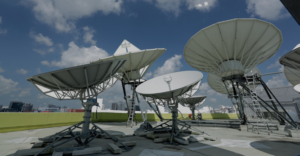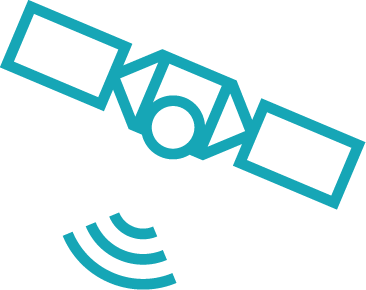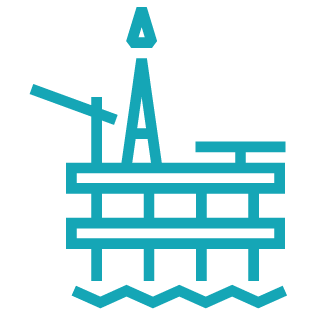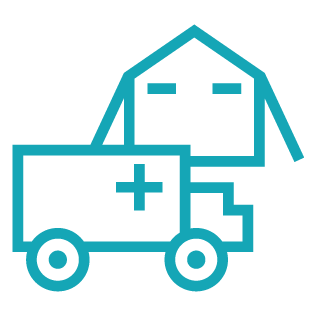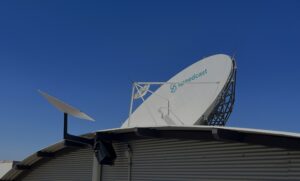The Internet of Things will have a total economic impact of $4 to 11 trillion a year by 2025, according to McKinsey. At the top end of that prediction, it will be equal to about 11 percent of the world economy.
The impact will come from cost savings, productivity improvements and revenue increases across millions of companies and billions of people. It’s a rich prize – if it can be realized. But today, a staggering 76 percent of IoT projects either stall at the proof-of-concept stage or fail to achieve their objectives, according to a report from Cisco.
Why? Cisco cited reasons including lack of collaboration between IT and the business side, lack of IoT expertise and a go-it-alone strategy that fails to build partnerships with other companies making up the complex ecosystem of IoT. From Speedcast’s perspective – providing high-performance networks for remote sites far off the conventional grid – there are additional obstacles that might never cross your mind.
Regulatory barriers
Connectivity is regulated country by country. Some nations have “open skies” while others put up barriers. A satellite operator welcome in one country may not be able to land a signal in another. Devices may require certification by the telecom regulator, even if they have long been certified by most other nations. Some nations have rules that require data originating in the country to reside in that country or transit the networks of a national carrier. Before implementing an international IoT solution, be sure to consider issues including:
- Device certification
- Network and radio frequency authorization
- Data management methods including cloud computing and data privacy
What you can do about it: When you deploy IoT in your home country, it is easy to gain regulatory knowledge from local telecom and wireless carriers. Deploying in foreign countries presents an entirely different set of challenges. Your best bet is to work with a telecom provider that has global operations and maintains vital business relationships in the countries you are targeting. Their expertise in national regulations can save significant time and cost during deployment.
Need to Know
Learn what it takes to keep IoT projects on track from Speedcast’s IoT Expert
Connectivity costs
The general expectation in IT is that bandwidth is dirt cheap. Don’t most mobile carriers offer unlimited data plans? But almost none of that is true for remote connectivity, where a mix of satellite and extended 4G/LTE must take the place of fiber networks. Higher cost puts pressure on the ROI of the IoT project. It also puts a premium on the ability to optimize traffic and manage bandwidth proactively on a global basis, which can turn around the project’s economics.
What you can do about it: Choose a provider that can offer many different connectivity options and an intelligent network management platform, because it will give you the power to optimize both performance and cost. You should also insist on having access to cost control tools that give you visibility and alert you to changes in usage that could otherwise lead to billing surprises. IoT applications tend to evolve after deployment, and you need that visibility to make adjustments to the service plan as data volumes increase or decrease.
Managing the data flow
The product of any IoT project is data, whose analysis yields value: reduced downtime through predictive maintenance, better management of risks or higher productivity from a well. Collecting data from the physical world and making it digital is the key first step. The data, however, comes from myriad physical sensors, and on most sites, integrating them is the biggest challenge. Those sensors and devices need to connect and inter-operate over a wide variety of channels, from private LTE and Wi-Fi to LORA and Bluetooth, also known as the “first mile.” The network may need to operate in a steel environment, like that of an energy platform, that plays havoc with radio frequencies. Then the traffic must be aggregated for the most efficient transmission via satellite or other channel to the data center where it will be analyzed. If any part of the “data pipe” breaks or springs a leak, it will compromise the integrity of the analytics.
What you can do about it: Selecting a vendor is about more than network capacity and technology offerings. You should also consider the various areas of expertise the experience needed to ensure successful data delivery from the first mile to your application.
Geting serious about systems integration
It takes a high level of sophistication in systems engineering and integration at far-flung sites to make the end-to-end solution perform as expected and ensure the flow of that data. An effective design and integration process covers –
- Devices.Devices at the edge, whether they are physical sensors, edge computing, or connectivity terminals, must do their jobs in sometimes harsh conditions.Connectivity, power availability, form factor and other often-overlooked issues become critical to success.
- Network Connectivity.Some connectivity solutions will employ a store-and-forward messaging protocol, while others will leverage real-time IP connections.Network engineers will need to define the routes to ensure maximum availability and secure transmission of the data.
- Device and Data Management Platform.Most IOT applications deploy thousands of devices or more.That makes it critical to minimize time per device for installation and support and to maximize the lifetime of the devices. The best approach is to use a central platform to manage devices, data flows and integration with analytics.
- Analytics Platform.The final output of the data is generally displayed in a graphical user interface (GUI) or end user portal.Whether it’s a mapping tool, graphical charts, digital twins, or other visual tools, these platforms could require a variety of data formats, deployment environments, and user experience features in order to deliver the full value sought by customers.
Speedcast is the global satellite connectivity partner for one of the world’s top three communications carriers. We contribute to their projects our expertise in systems design and integration, the optimization and bandwidth management capabilities of our intelligent network, and years of experience in licensing, customs and logistics in countries around the world. They offer our customers the resources and technology of one of the world’s largest terrestrial carriers. Together, we are working to make sure the Internet of Things delivers on its huge potential, one company at a time.
Cisco: https://newsroom.cisco.com/press-release-content?articleId=1847422
Connectivity costs
The general expectation in IT is that bandwidth is dirt cheap. Don’t most mobile carriers offer unlimited data plans? But almost none of that is true for remote connectivity, where a mix of satellite and extended 4G/LTE must take the place of fiber networks. Higher cost puts pressure on the ROI of the IoT project. It also puts a premium on the ability to optimize traffic and manage bandwidth proactively on a global basis, which can turn around the project’s economics.
What you can do about it: Choose a provider that can offer many different connectivity options and an intelligent network management platform, because it will give you the power to optimize both performance and cost. You should also insist on having access to cost control tools that give you visibility and alert you to changes in usage that could otherwise lead to billing surprises. IoT applications tend to evolve after deployment, and you need that visibility to make adjustments to the service plan as data volumes increase or decrease.
Managing the data flow
The product of any IoT project is data, whose analysis yields value: reduced downtime through predictive maintenance, better management of risks or higher productivity from a well. Collecting data from the physical world and making it digital is the key first step. The data, however, comes from myriad physical sensors, and on most sites, integrating them is the biggest challenge. Those sensors and devices need to connect and inter-operate over a wide variety of channels, from private LTE and Wi-Fi to LORA and Bluetooth, also known as the “first mile.” The network may need to operate in a steel environment, like that of an energy platform, that plays havoc with radio frequencies. Then the traffic must be aggregated for the most efficient transmission via satellite or other channel to the data center where it will be analyzed. If any part of the “data pipe” breaks or springs a leak, it will compromise the integrity of the analytics.
What you can do about it: Selecting a vendor is about more than network capacity and technology offerings. You should also consider the various areas of expertise the experience needed to ensure successful data delivery from the first mile to your application.
Geting serious about systems integration
It takes a high level of sophistication in systems engineering and integration at far-flung sites to make the end-to-end solution perform as expected and ensure the flow of that data. An effective design and integration process covers –
- Devices.Devices at the edge, whether they are physical sensors, edge computing, or connectivity terminals, must do their jobs in sometimes harsh conditions.Connectivity, power availability, form factor and other often-overlooked issues become critical to success.
- Network Connectivity.Some connectivity solutions will employ a store-and-forward messaging protocol, while others will leverage real-time IP connections.Network engineers will need to define the routes to ensure maximum availability and secure transmission of the data.
- Device and Data Management Platform.Most IOT applications deploy thousands of devices or more.That makes it critical to minimize time per device for installation and support and to maximize the lifetime of the devices. The best approach is to use a central platform to manage devices, data flows and integration with analytics.
- Analytics Platform.The final output of the data is generally displayed in a graphical user interface (GUI) or end user portal.Whether it’s a mapping tool, graphical charts, digital twins, or other visual tools, these platforms could require a variety of data formats, deployment environments, and user experience features in order to deliver the full value sought by customers.
Speedcast is the global satellite connectivity partner for one of the world’s top three communications carriers. We contribute to their projects our expertise in systems design and integration, the optimization and bandwidth management capabilities of our intelligent network, and years of experience in licensing, customs and logistics in countries around the world. They offer our customers the resources and technology of one of the world’s largest terrestrial carriers. Together, we are working to make sure the Internet of Things delivers on its huge potential, one company at a time.
Cisco: https://newsroom.cisco.com/press-release-content?articleId=1847422




